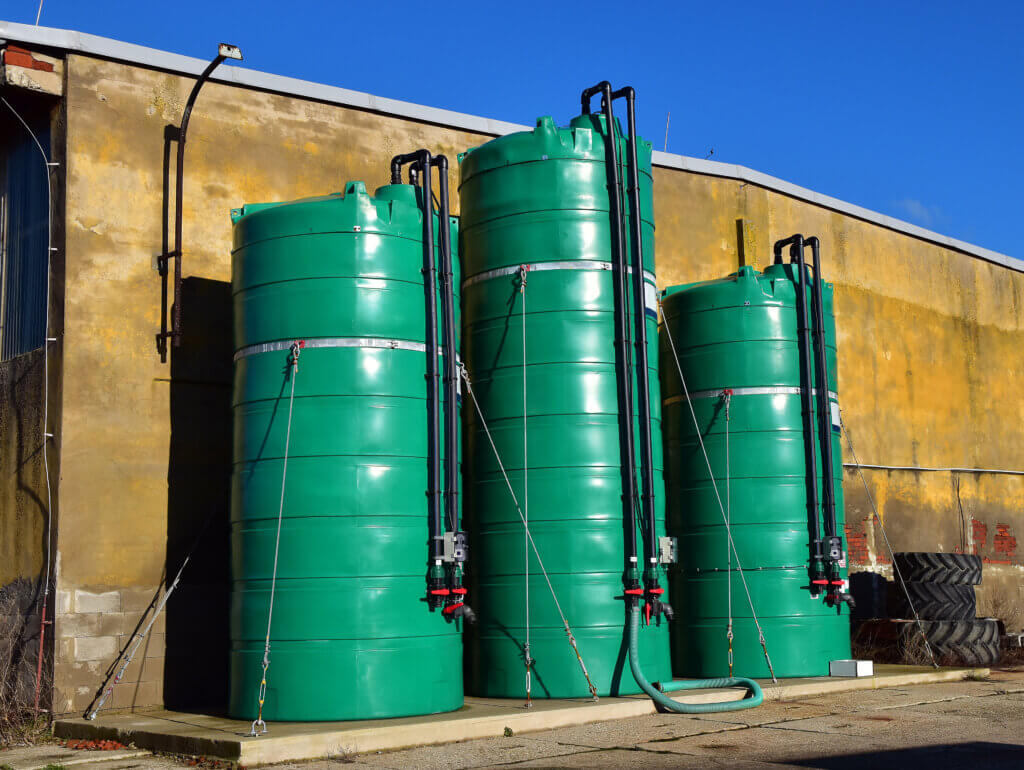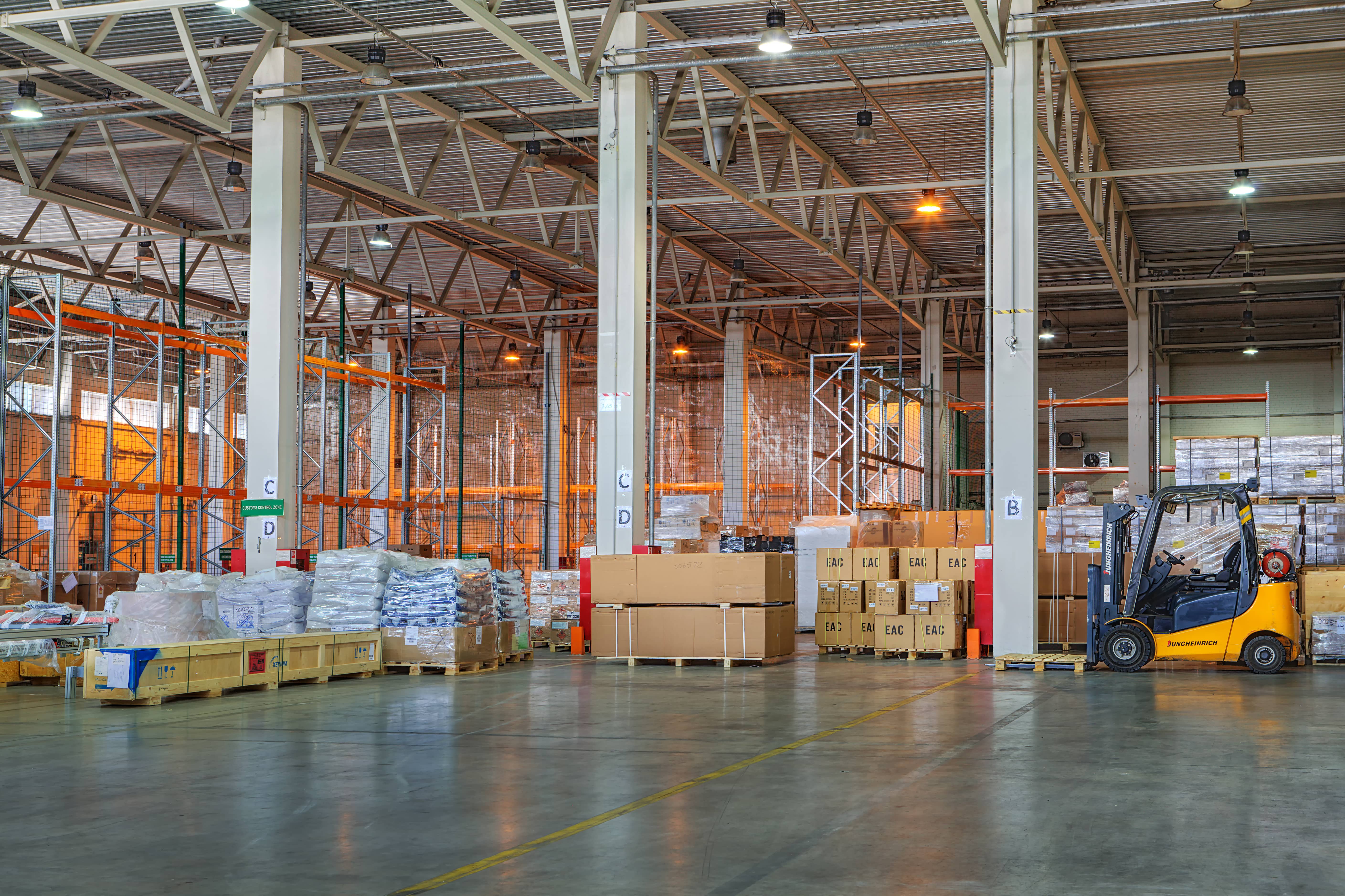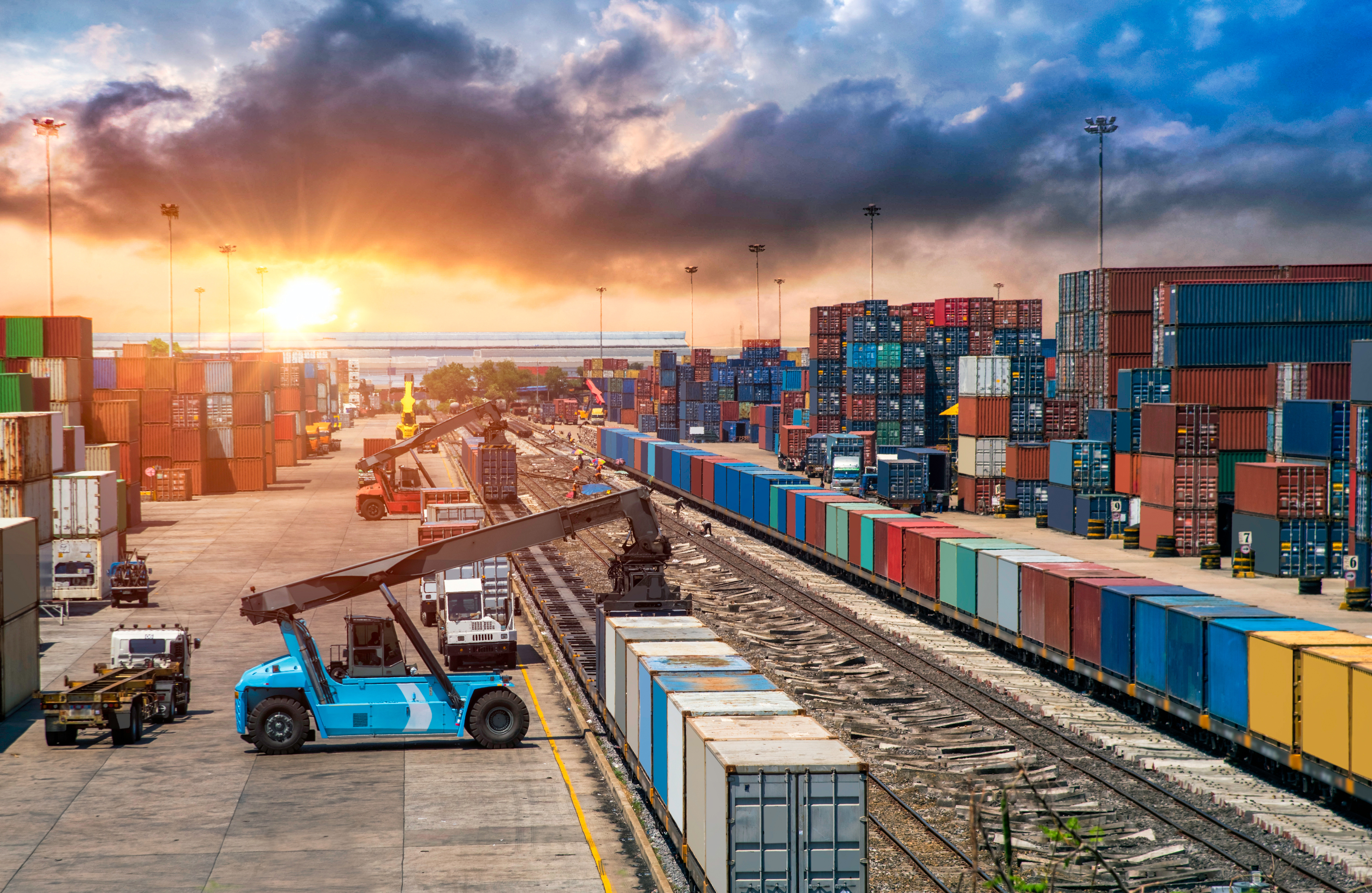In modern agriculture, we rely heavily on several chemical compositions to give crops the best chance of success, with farmers striving to maximize crop yield and quality. Among the many types of fertilizers available, calcium nitrate fertilizer stands out for its ability to deliver nitrogen and calcium – two vital elements that plants need to thrive.
But how do these chemicals work, and how do they get from the manufacturer to the farmers’ fields? That’s where bulk shipping comes in, a method of transportation that allows large quantities of calcium nitrate fertilizer to be moved efficiently and cost-effectively across the globe. Discover calcium nitrate fertilizer, why farmers value it, and how it’s shipped in bulk to support agricultural practices worldwide.
What Are Calcium Nitrate Fertilizers?
As the name suggests, calcium nitrate fertilizers are a type of fertilizer that provides both calcium and nitrogen to plants. They are highly soluble in water; hence, they can be easily dissolved and applied directly to the soil or plants. This characteristic allows for quick absorption by the roots, ensuring that plants receive the necessary nutrients to grow healthy and strong.
These fertilizers are often used in agriculture to improve crop quality and increase yields. They are beneficial for crops that require high levels of calcium and nitrogen. They are also prevalent additions in hydroponic systems, greenhouse cultivation, and other specialty agricultural applications.
Another significant characteristic that makes calcium nitrate fertilizers prevalent among farmers is that they do not contribute to soil acidification due to a neutral pH, which can be a significant problem with other nitrogen fertilizers, such as ammonium nitrate.
The Chemistry of Calcium Nitrate Fertilizers
Calcium nitrate fertilizers are a type of inorganic fertilizer that contains the chemical compound calcium nitrate. Typically, this compound consists of one calcium ion and two nitrate ions.
Calcium nitrate is produced by combining nitric acid with calcium carbonate or hydroxide. The resulting compound is then dehydrated, yielding calcium nitrate as a white, crystalline substance highly soluble in water.
When farmers apply calcium nitrate to soil or plants, it dissociates into calcium and nitrate ions. Calcium ions are taken up by the plant roots and used for various physiological processes such as cell well development, enzyme activation, and regulation of osmotic pressure. Plants use nitrate ions as a nitrogen source, an essential component of chlorophyll and required for protein synthesis.
Chemical nitrate fertilizers are unique in providing calcium and nitrogen to plants. This is important because calcium is often deficient in soils, while nitrogen is one of the most limiting nutrients for plant growth. Calcium nitrate fertilizers can help improve plant growth and yield by providing both nutrients.
The chemistry of calcium nitrate fertilizers is an essential consideration for farmers and gardeners. It determines the nutrients available to plants and the impact the fertilizer may have on soil pH.
Types of Calcium Nitrate Fertilizers
When it comes to calcium nitrate fertilizers, not all are created equal. From granular to liquid and beyond, there are different types of calcium nitrate fertilizers on the market, each with unique properties and uses. Let’s look closely at some of the most common types of calcium nitrate fertilizers and what makes them stand out.
● Granular Calcium Nitrate
This is a solid form of calcium nitrate and a favorite among farmers and gardeners thanks to its versatility and effectiveness. Whether you want to give your plants a calcium and nitrogen boost via the soil or a foliar spray, granular calcium nitrate can do the job.
● Liquid Calcium Nitrate
Liquid calcium nitrate fertilizer is a form of calcium nitrate that comes in a liquid state. It boasts high solubility, making it particularly convenient for applications to plants and soil. This type of fertilizer is prevalent in hydroponic systems, where it can be quickly and easily dissolved in water.
● Calcium Ammonium Nitrate
This type of fertilizer combines calcium nitrate and ammonium nitrate, making it a powerful component that supplies plants with much-needed calcium, a highly available form of nitrogen that plants can use immediately, and finally, ammonium. With its trifecta of nutrients, calcium ammonium nitrate is a popular choice for those looking to maximize plant growth and yield.
● Calcium Nitrate with Boron
Calcium nitrate infused with boron is a specific type of fertilizer that incorporates the vital micronutrient boron, which plays a crucial role in supporting the growth and development of plants. This fertilizer is advantageous for crops particularly vulnerable to boron insufficiencies, such as grapes, apples, and almonds.
Overall, the choice of calcium nitrate fertilizer will depend on the specific needs of the crop and the growing conditions. Farmers and gardeners may choose to use a particular type of calcium nitrate fertilizer based on the crop’s nutrient requirements, the soil pH, and the availability and cost of different fertilizers.
Functions of Calcium Nitrate Fertilizers
Calcium nitrate fertilizers are a popular and effective way to give plants the essential nutrients they need to grow and thrive. As a compound of calcium and nitrogen, this fertilizer promotes healthy plant growth and helps increase yield and improve crop quality.
With a wide range of functions, calcium nitrate fertilizers are a versatile tool for farmers, gardeners, and anyone looking to cultivate healthy and robust plants. Here, we explore the various functions of these fertilizers and how they benefit plants.
● Supplying Calcium
As a good source of calcium, these fertilizers help to improve soil structure and aid in the uptake of other vital nutrients by plants, such as potassium and magnesium. Calcium is an essential plant nutrient for several physiological processes, including cell division, root growth, and new shoots and leaf development. It also plays a role in strengthening plant cell walls, which can help to protect plants against disease and pests.
When plants are calcium deficient, they tend to develop symptoms such as stunted growth, yellowing of leaves, and blossom end rot in fruits and vegetables. Calcium nitrate fertilizers can effectively correct these deficiencies and improve plant health and development.
● Providing Nitrogen
Like calcium, nitrogen is another essential element for plant growth and development and plays a crucial role in various metabolic processes, such as chlorophyll production and photosynthesis.
First, chlorophyll is responsible for the green color of leaves and is essential for capturing sunlight and converting it into energy through photosynthesis. On the other hand, photosynthesis helps plants convert light energy into chemical energy in the form of glucose, which is used as fuel for growth and reproduction.
Nitrogen is a critical component of several essential plant molecules, including proteins, nucleic acids, and enzymes necessary for chlorophyll, photosynthesis, and other relevant plant functions.
● Promoting growth and yield
Calcium nitrate fertilizers promote plant growth and yield through various mechanisms. As we’ve seen, calcium is essential for the proper development of cell walls and membranes, which provides structural support to the plant and helps to maintain its shape. Calcium also plays a role in root development, which allows plants to absorb water and nutrients from the soil more efficiently.
The nitrogen in calcium nitrate fertilizers also fosters many metabolic processes necessary for plant growth and development. When plants receive adequate amounts of both elements, they conduct photosynthesis more efficiently, resulting in faster growth and higher yields. Calcium also helps regulate the uptake of other essential nutrients, further supporting plant growth and development.
In addition to its direct effects on plant growth and development, calcium nitrate fertilizer can improve soil health. It achieves this by neutralizing soil acidity and improving soil structure and water retention, providing a more favorable environment for plant roots. Finally, calcium nitrate fertilizers enhance the quality and visual appeal of fruits and vegetables, such as apples and tomatoes.
● Enhancing stress tolerance
Several studies have shown that applying calcium nitrate fertilizers can enhance a plant’s ability to withstand stress-inducing factors, such as periods of drought and excessively high salinity levels. This indicates that these fertilizers have the potential to enhance plants’ stress tolerance, which can have a positive impact on their overall health and growth.
● Preventing nutrient deficiencies
Incorporating calcium nitrate into the soil can mitigate the risk of nutrient deficiencies in plants, particularly concerning the availability of calcium and nitrogen. These deficiencies, if left unaddressed, can lead to inhibited growth and reduced crop yields. Therefore, calcium nitrate fertilizers in soil management practices can promote optimal plant nutrition and support healthy plant development.
Calcium nitrate fertilizers are absolute game-changers for cultivating thriving and bountiful plants. These fertilizers bolster plant growth and quality and are a powerful tool for improving crop yields. In addition to this, they enhance the plant’s ability to withstand challenging environmental stressors. Calcium nitrate fertilizers significantly promote healthy and robust plant life, and their impact cannot be overstated.
Factors Affecting the Performance Of These Fertilizers
While calcium nitrate fertilizers are a popular choice for farmers and gardeners due to their ability to provide essential nutrients to plants, the performance of these fertilizers can be influenced by various factors. Hence, understanding these factors is crucial in ensuring the plants receive the nutrients necessary for healthy growth and development. This section explores some key factors that can affect the performance of calcium nitrate fertilizers and their impact on plant growth.
● Soil pH
Soil pH is a significant factor determining calcium nitrate fertilizer’s effectiveness. If the soil’s pH is too acidic or alkaline, the plant cannot absorb the nutrients in the fertilizer effectively. These fertilizers work best in soils with a pH range of 6.0 to 7.5. Therefore, measuring the soil pH before applying calcium nitrate fertilizers is essential to ensure the earth is within the optimal range.
● Temperature
The soil temperature also affects the uptake of nutrients by plants. Cold soil temperatures can slow nutrient absorption, leading to poor plant growth. It is recommended to apply calcium nitrate fertilizer when the soil temperature is above ten-degree celsius, the optimal temperature range for nutrient uptake by the plant.
● Water Availability
Water is crucial for the uptake of calcium nitrate by plants. Plants cannot absorb the nutrients in fertilizers if the soil is too dry. Therefore, ensuring the soil is adequately moist before applying the calcium nitrate fertilizers is vital. Farmers should use these fertilizers before rainfall or irrigation events to ensure even distribution throughout the ground.
● Plant Species
Different plant species have different nutrient requirements. And while calcium nitrate fertilizer benefits most plants, some species may require higher or lower amounts of calcium and nitrogen. As such, there is a need to understand the nutrient requirements of the specific plant species being grown to adjust the calcium nitrate application rates according.
● Application Rate
Speaking of application rate, the fertilizer amount applied also affects its performance. Overapplication of calcium nitrate can lead to excessive growth, weakening the plant’s structure and making it more susceptible to disease and pest infestation. On the other hand, under-application can result in poor plant growth and reduced crop yields.
Drawbacks Of Calcium Nitrate Fertilizers
Even though calcium nitrate fertilizers offer numerous advantages, it’s not all sunshine and roses! As with any fertilizer, there are a few drawbacks that farmers and gardeners should consider before using them. The most significant disadvantage of calcium nitrate fertilizer is its cost. While undeniably influential, they are generally more expensive than other fertilizers. This is because they are more complex to produce and contain higher nutrients, particularly nitrogen and calcium.
When applied in excess, these fertilizers can have several adverse effects, such as soil salinity and pH imbalances. These effects result in soil degradation, decreased crop yields, stunted plant growth, nutrient deficiencies, and increased susceptibility to disease and pests. Furthermore, if these elements, particularly nitrogen, leach into groundwater, it can cause eutrophication, harming aquatic ecosystems.
Finally, calcium nitrate fertilizers’ chemical composition and characteristics require careful handling and storage due to their corrosive nature, adding to transportation complexities and storage costs. They can also be sensitive to moisture and temperature changes, impacting their effectiveness.
Shipping Calcium Nitrate Fertilizer In Bulk
Shipping calcium nitrate fertilizer in bulk can be complex and potentially hazardous if proper handling and safety procedures are not followed. However, by taking the necessary precautions, you can ensure that your fertilizer arrives at its destination safely and in good condition. Here are some simple but critical practices when shipping calcium nitrate fertilizer in bulk.
Choose The Appropriate Shipping Method
Firstly, it is vital to consider the appropriate shipping method based on certain factors, from the volume of fertilizer in transit to the distance and any special handling requirements. This decision will determine the equipment needed to load and transport the fertilizer safely and efficiently.
Package And Label The Fertilizer
The second step requires proper packaging and labeling to ensure the cargo is handled safely and not contaminated. Ensure the calcium nitrate fertilizer is appropriately packaged in bags or other containers suitable for bulk transportation. The packaging should be sturdy and able to withstand the rigors of transport. The bags or containers should also have an appropriate label with the contents and relevant safety information.
Use Appropriate Handling Equipment
During the loading and unloading, it is crucial to use suitable handling equipment, such as conveyor belts or forklifts. This step is essential as it significantly reduces the possibility of damage or spillage during transportation, which could result in potential harm to individuals or the environment.
Furthermore, it’s important to note that calcium nitrate has hygroscopic properties, which allow it to absorb moisture from the air. To prevent this from happening, it’s imperative to ensure that the shipping container or railcar is equipped with proper ventilation systems. These systems will help to maintain a suitable and consistent environment, reducing the risk of any potential damage to the fertilizer.
Follow Safety Regulations
Finally, it’s crucial to ensure that you comply with all pertinent safety regulations for transporting hazardous materials. This process includes adhering to rules set by recognized organizations such as the International Maritime Organization or the Department of Transport in the United States.
Failure to follow these regulations could result in severe penalties and compromise the safety of individuals involved in the shipping process. Therefore, it’s best to stay updated with the latest safety guidelines and procedures to safely ship calcium nitrate fertilizers and bulk cargo.
Engage Total Connection For Your Calcium Nitrate Fertilizer Shipping
Transporting calcium nitrate fertilizer in large quantities can pose distinctive obstacles, necessitating careful consideration to ensure the product reaches its intended location in optimal condition. Nonetheless, by partnering with a logistics provider with expertise in handling agricultural commodities, tailored solutions can be offered to address any challenges that may arise during the transportation phase.
Are you looking for a hassle-free and streamlined way to transport your calcium nitrate fertilizers in bulk? Look no further than Total Connection! Our proficient shipping services will ensure your products are delivered promptly and handled with precision. Get in touch with us now to discover more about our comprehensive solutions and the superior level of quality we provide.




